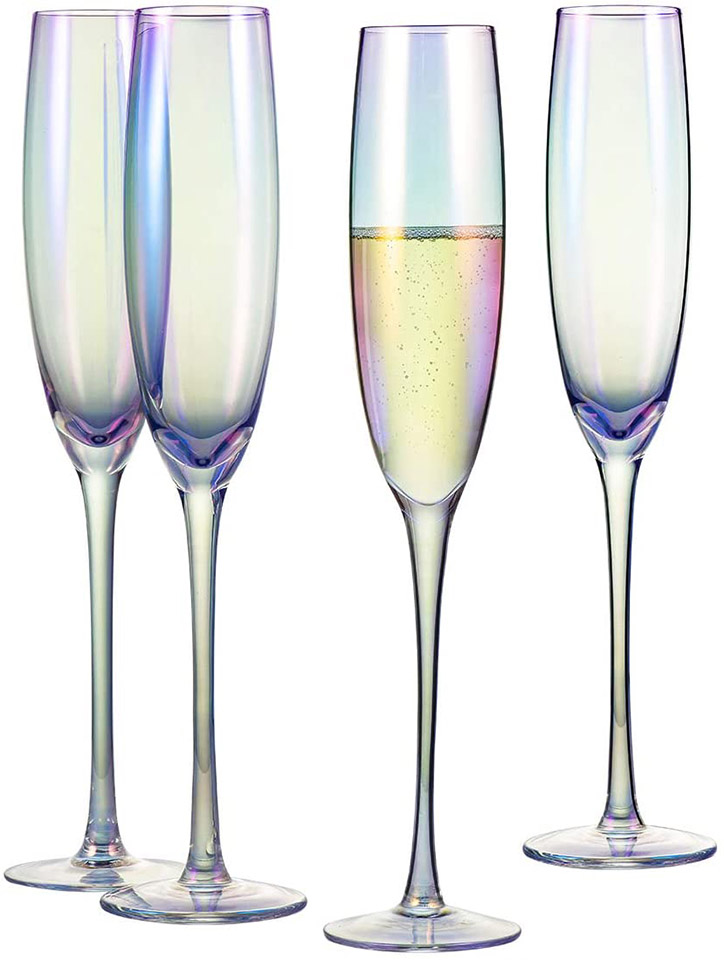
Among my emails this morning was the Decanter newsletter, providing the latest information about what’s going on in the world of wine. Founded in 1975, Decanter is Britain’s oldest monthly wine magazine and it’s currently available in over ninety countries. This morning’s headline referred to reviews of vintage Champagne. Interestingly, among the ninety-three wines tasted one of the most highly-rated was the 2012 Extra Special Louis Bernard Champagne from Asda, one of the largest supermarket chains in the country and not a place you immediately associate with fine wine.
But what exactly is “vintage Champagne”, as distinct from ordinary Champagne? Well, most Champagne is blended using wine from different grape harvests, usually from three to five different years. The base wine comes from a single year but producers blend in a percentage of stored wine from older vintages. The reason is consistency and house style. Every Champagne manufacturer (and there are plenty of them) has its own style: some are rich and bold; others are gentler and more elegant. Non-vintage wine accounts for about 95 percent of all Champagne production.
In contrast, vintage Champagne comes from a single year. If the weather conditions in a particular year are exceptionally good, some producers make wine using only grapes from that year. Not only that, vintage Champagne must be aged for a minimum of three years in bottle, in contrast to fifteen months for non-vintage wine. It often comes from grapes grown in the company’s most venerated vineyards. Even so, vintage Champagne is not necessarily better quality than non-vintage, though it’s often more interesting and demands a bit more thought and appreciation. All Champagne is made using the Méthode Champenoise (sometimes known as the Méthode Classique) and its production is extremely labor-intensive, a fact which is reflected in the comparatively high prices.
You might be contemplating a sparkler for the Festive Season. In Thailand, high quality Champagne will set you back about Bt. 3,000 and upwards. If you want something with a bit of class, we’re talking about Bt. 4,000 baht and upwards but they’re not easy to find. If money is no object, look for top producers such as Moët & Chandon, Veuve Clicquot, Dom Pérignon, Mumm, Laurent-Perrier, Tattinger, Pol Roger, Krug or Bollinger. These companies make Champagne for connoisseurs. If you rarely drink Champagne, you’re unlikely to appreciate these illustrious and complex wines, so save your money and go for something more modest.
The cheapest sparklers are made in much the same way as fizzy drinks, in which still wine is zonked with a dollop of carbon dioxide. They might not sound especially appetizing, but there are dozens of them around and a logical choice if you’re on a really tight budget.
There is a middle way, known as the Charmat Method in which the secondary fermentation takes place not in the bottle like Champagne, but in tanks. The Italian fresh-tasting sparkler Prosecco is produced using the Charmat method, Prosecco is the name of both the wine and the grape. Or at least it used to be, because in 2009 the Italian wine authorities changed the grape name Prosecco to Glera, a name by which it had been known locally for generations.
Prosecco is often considered a cheap alternative to Champagne and indeed the taste profile is similar. Both are often used as an apéritif but they are surprisingly versatile and pair successfully with a wide range of food. Sparklers go well with medium-intensity foods but can also matches the spicy curries and many other dishes of Southeast Asia. And incidentally, if the label describes a sparkling wine as “extra dry” it’s not very dry at all. If you want a really dry sparkler, look for the word “Brut” on the label.
You can find Prosecco in most large supermarkets but if you want Champagne, your best bet would be wine specialist or a supermarket with an extensive wine selection. Among the more modest Champagnes, Wine Connection sells Bichat Brut Champagne (Bt. 1,599), an entry-level basic sparkler described as having a citrus aroma, quite dry in flavour and soft in depth. Vines to Vino on Thepprasit Road offer Champagne Paul Dangin & Fils Brut (Bt.1,209) and the rather more interesting Champagne Besserat de Bellefon Brut (Bt. 1,560) which according to the company website has an aroma of honeysuckle, acacia, dried flower notes, white peach, and plum with Pinot Noir flavours with red fruits and honey.
Sparkling wine tastes best at between 4-9°C (39-48°F) or slightly above refrigerator temperature. If in doubt, colder is safer. After opening, stick the bottle in a wine bucket containing ice and water and if possible, leave it corked until it’s time to taste it. If you don’t manage to finish a bottle of sparkling wine at one session, you can leave it in the fridge for a short time. There’s no way you’ll get the cork back in again, but you can buy plastic air-tight stoppers with a pull-down lever that effectively seal the bottle. In this way, the wine stays fresh and the bubbles remain active for up to a couple of days. Champagne can be served in either an ordinary wine glass or one of those tall, elongated tulip-shaped glasses, known technically as Champagne flutes. Never drink Champagne out of those old-fashioned “saucers-on-a-stick” for they are completely useless for wine. Or, for that matter anything else.
 |
 |
 |





